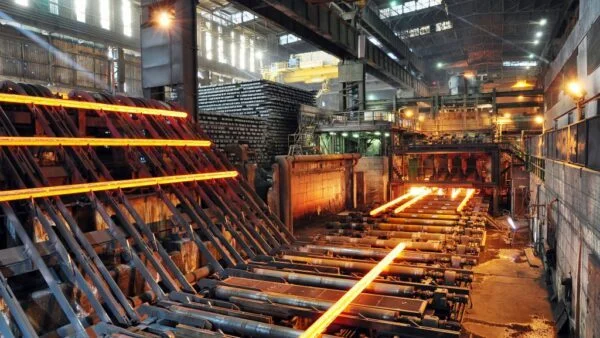In my previous articles I have written about valuation of businesses using the following methods:
Discounted Cashflow Method (DCM), also called the Net Present Value (NPV) method.
Price Earnings (PE) ratio method which uses the PE ratio of comparable businesses. Market approach which involves arriving at a valuation based on recent similar transactions.
Net Assets Method, also called the Balance Sheet (or Statement of Financial Position) method.
Valuation of a gold mine
The valuation of a gold mine is known by other names such as gold mineral asset valuation and different models or methods are used. For example in South Africa an internationally recognised framework called the SAMVAL Code is used. This code uses a combination of two approaches. The first is the value in use method which basically involves determination of the NPV of the future net cashflows of the business over the useful life of the mineral asset.
The second method, usually for purposes of comparison or checks and balances, is the market approach. This is based on the principle of willing buyer willing seller and requires that consideration obtainable from the sale of the asset be determined as if in an arm’s
length transaction.
Using future cashflows to value a gold mine
This method is very popular with business valuers and in capital investment appraisals by management. It bases the valuation of a business on the current or present value of expected future net cashflows.
It is based on future cashflows, not profit. The key components of the valuation include the following:
Projected annual cashflows for the duration of the useful life of the mine, Projected annual operating expenditure for the duration of the useful life of the mine, Projected capital expenditure (to maintain or expand capacity).
Net Cashflows
Net Present Values
Adjustment for Debt to arrive at valuation of a company.
Projected annual cash inflows
The annual cashflow inflows, usually in the form of revenue are projected based on the following factors: Estimated underground gold resource. This is usually done by experts such as Geologists who estimate the underground mineral resource and document by way of geological or technical reports. One normally finds the estimated gold ore and estimates of bullion to be won from the mine, for example as so many grams per tonne.
Projected gold prices over the useful life of the mine. These prices are multiplied by the estimated bullion to be recovered from the mine. Any significant errors in assumptions made will affect the reasonableness of the valuation.
Operating expenditure (Opex)
For each of the operating future years annual operating expenditure (Opex) is estimated and matched against projected cash inflows. Opex includes mining costs, processing costs and administration costs, etc. Depreciation is excluded. It is quite normal to find known
standard opex per ounce or kilogram at a mine based on historical actuals as adjusted for the
future. Significant errors in projections will upset the valuation.
Future capital expenditure
Future capital expenditure (Capex) either to maintain or expand capacity has to be factored in as a deduction. Such future Capex takes the place of depreciation.
Annual net cashflows
Annual net cashflows will be computed as the net of projected Cash inflows (Revenue), Opex and Capex. These have to be computed per annum. It is also normal to include as cash inflows residual or salvage values to be realised from the disposal of capital equipment.
Discount factors
Annual discount factors are then derived from the estimated annual discount rate. Discount rates are normally derived from lending rates by banks. Discounting the Annual Net Cashflows has the effect of presenting those cashflows at present (current or Year Zero)
values. It is common to find “what if” analysis to show the effect of different discount rates.
Net present value
Adding the annual Net Present Value for each year gives the overall Net Present Value (NPV).
This NPV is commonly referred to as the Enterprise Value or EV. In other words this is the value of the mine assuming there is no debt.
Adjusting for debt to arrive at valuation of a mining company
When debt (amounts owed to creditors) is factored in this reduces the EV to funds or value attributable to ordinary shareholders who by their nature have residual interest in the business. This value represents what is normally referred to as the value of a business. This is widely not understood.
Business valuation versus asset valuation
The total value of a company’s assets usually as per its Statement of Financial Position (or Balance Sheet) is widely mistaken for the value of the business.
It is quite common to hear shareholders claiming that they own all the assets of the company when the company is deep in debt. No attempt is made to compute the residual interest of the shareholders after adjusting for the debt.
While I will write a future article on this aspect readers are advised to have an appreciation of how deceased estates for example are valued. It is simply total estate assets less estate creditors and the net or residual becomes available to the beneficiaries of the estate.
Disclaimer
This simplified article is for general information purposes only and does not constitute the writer’s professional advice.
Godknows Hofisi, LLB(UNISA), B Acc(UZ), CA(Z), MBA(EBS,UK) is a legal practitioner / conveyancer with a local law firm, chartered accountant, insolvency practitioner, registered tax accountant, consultant in deal structuring, business management and tax and is an experienced director including as chairperson. He writes in his personal capacity. He can be contacted on +263 772 246 900 or gohofisi@gmail.com.





